It’s hard to find a place to start, but I absolutely want to thank you for reading this. This newsletter is very near 200 subscribers, and I cannot put into words how much I appreciate your support and comments and questions.
The University of Gastronomic Sciences is a different kind of school, and the Master of New Food Thinking program is a unique program within it. Which means our study trips are, well, out of the ordinary. Extraordinary, to be precise. Our trip to Friuli wasn’t just “here’s a winery and the owner will tell you why his wine is special,” it’s “this winery is doing something no one has done in more than a thousand years.”
Still, it was a magical surprise to go to dinner, enter through a door almost invisible in a graffiti-filled wall, go up a steep flight of stairs and across a wooden floor cratered with a century of mistreatment, and enter into this dining room.
This is the Hidden Factory Barcelona, where founder, CEO, and chef Xavier Morón treated us to more food than we could eat, more stories than we could remember, and a more magical evening than we could have imagined.
To better explain how the evening went, let’s jump ahead to the end of the evening, and what was left on the table, and see what you can deduce.
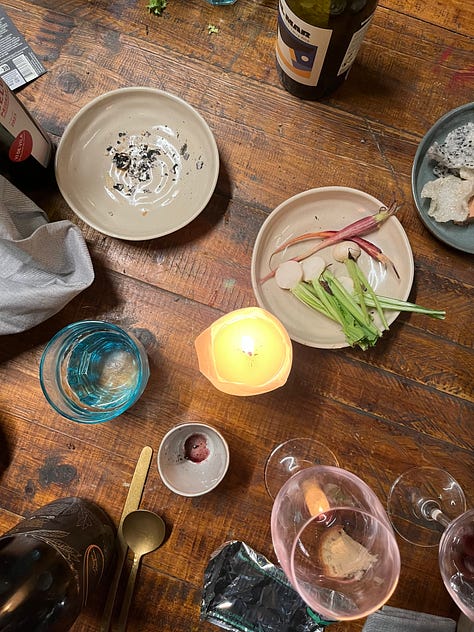
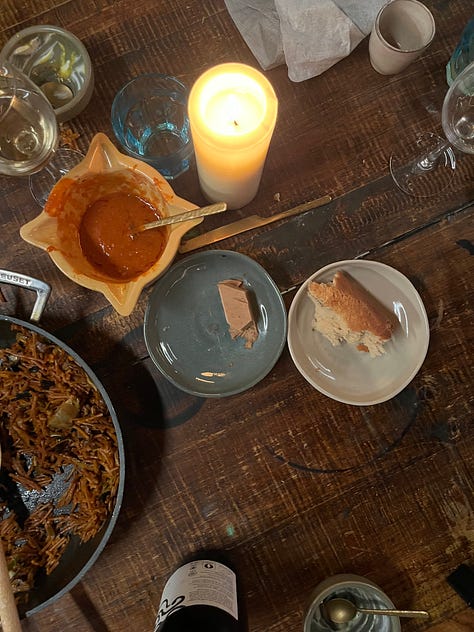
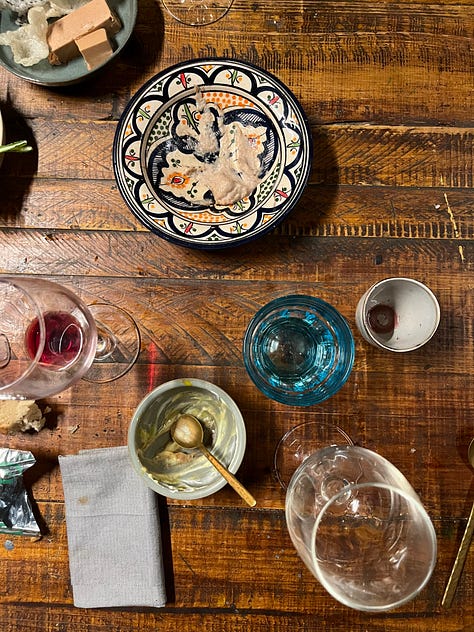
Starting on the left, you might notice some ashes in the bowl and see something had been burned. Assorted cups and plates and bowl explain that a variety of food and drink were served. The utensils — the knife in the center photo and spoon on the right — belie an extraordinary table setting. The sediment in the white cups indicate a uniquely crafted wine. You can see small vegetables, a noodle dish, bread, hummus (?), and what looks like foie gras in the center.
I am also reconstructing the evening with these photographs, and the few notes I was able to take, because there was just too much to take in — visually, audibly, and gastronomically. Some information is missing, but we’ll work with what we have, no?
The first course began with this wine, on this table. (Well, it’s a table at the moment, but Chef Morón explained it can also be stood upright to become a mirror.) He crafted it with an organic material (the exact type was lost in the evening) gelled with agar-agar, and covered with a phosphorescent paint that plays tricks with colors — the photo shows pink and red, but from other angles there are blues and greens. The wine was made from ancient grapes, and we drank from intimate cups.
The first course came from a ritual honoring three archetype Mediteranean women, framed by unique wood representing their gift, and behind silk screens of the image, resulting ia beautifullyly haunting image. The first woman (framed by grape vines) gave wine, the second held a shelf with bread, and the third (framed with olive wood) offered an olive oil candle that melted for dipping the bread.
Not just bread, but one made with chickpea flour, buckwheat, and honey. (Chef recited the exact recipe, but I’m quite sure I wrote it down wrong.)
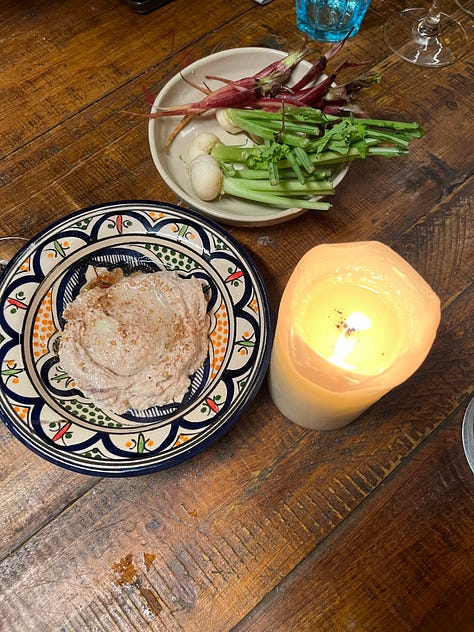
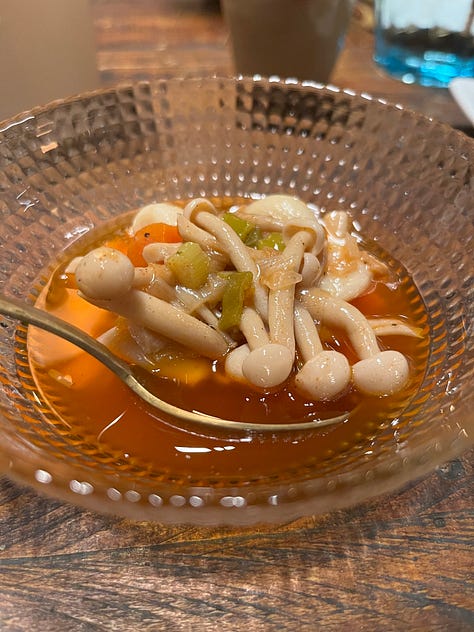
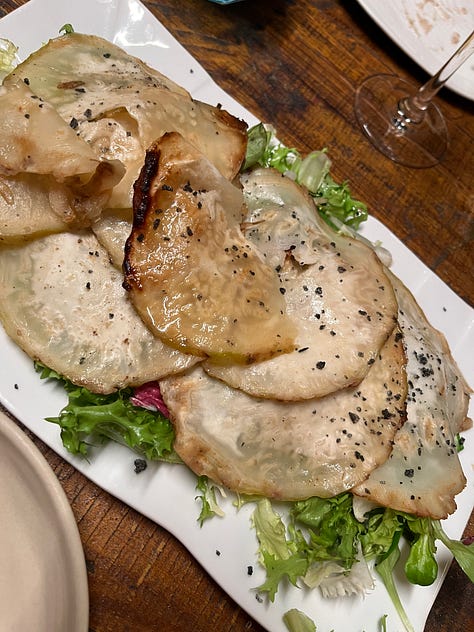
Hummus — but not hummus, something different — for dipping tiny carrots and perfectly halved radishes. Escabeché made with olive oil, white wine, vinegar, and smoked paprika to juice the mushrooms and whole garlic cloves. Served over baked celery root.
With each course, Chef Morón told powerful, entertaining, animated stories, along with music from the period when the dish originated. I cannot recall if it was traditional or something he invented, but above he is demonstrating how to peel the charred skin off the onion-leek (lost) to reveal the sweet-tender heart that we then dipped in romesco sauce.
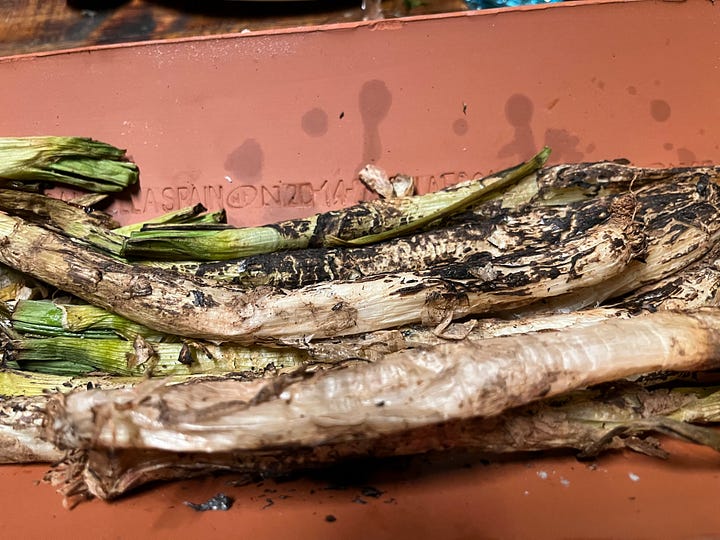
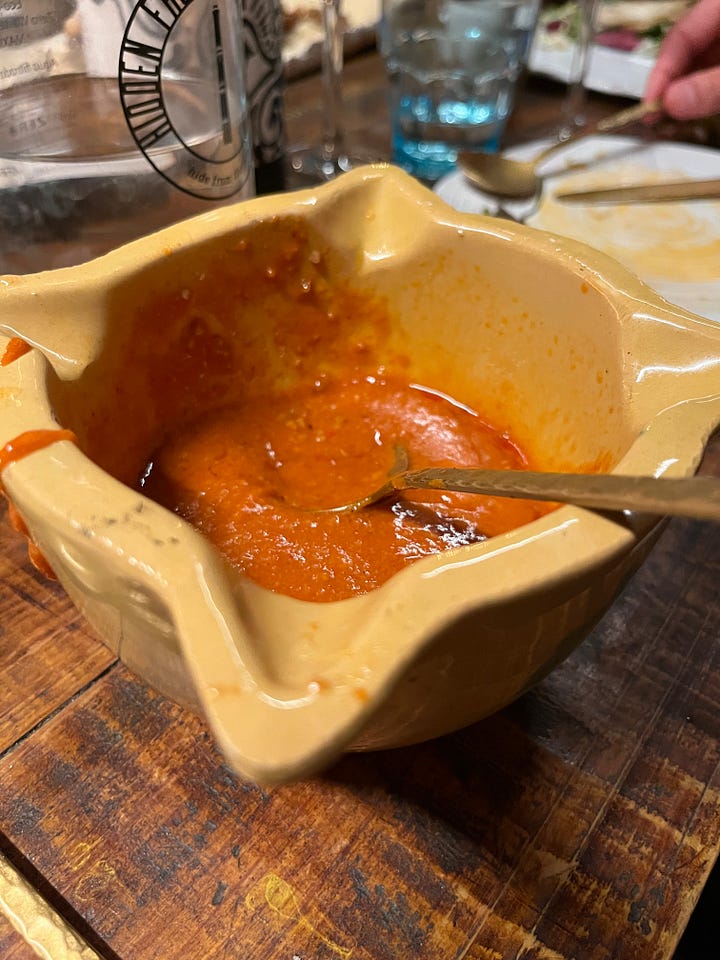
Romesco is a traditional Catalan sauce made from tomatoes, garlic, nuts, and other ingredients. Chef’s secret addition is kimchi juice for a tart kick.
Note the serving containers. The charred onions are served in a curved roof tile, and the odd romesco bowl is designed to be held securely in your lap, between your legs, whilst you grind the ingredients into a sauce.
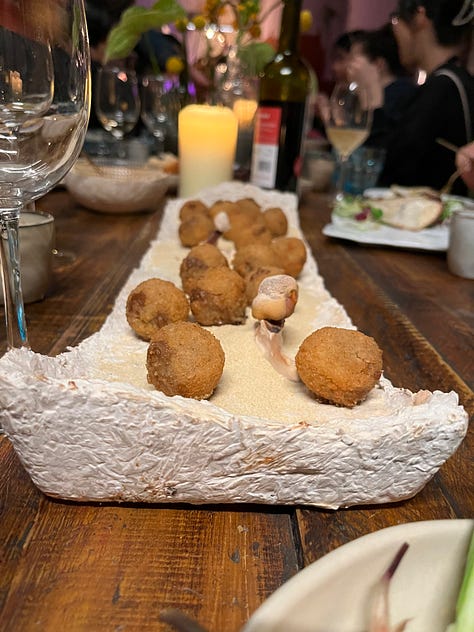
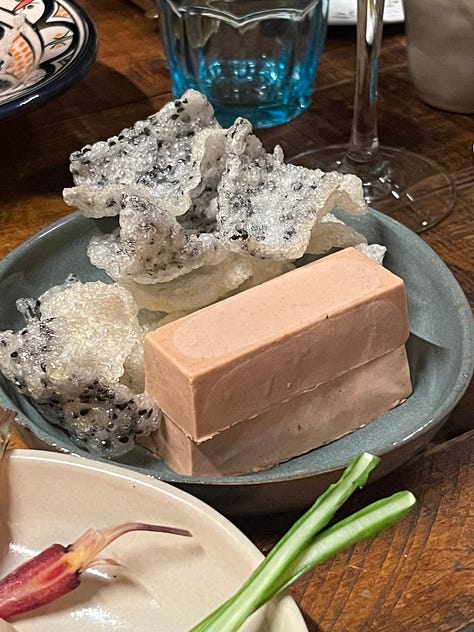
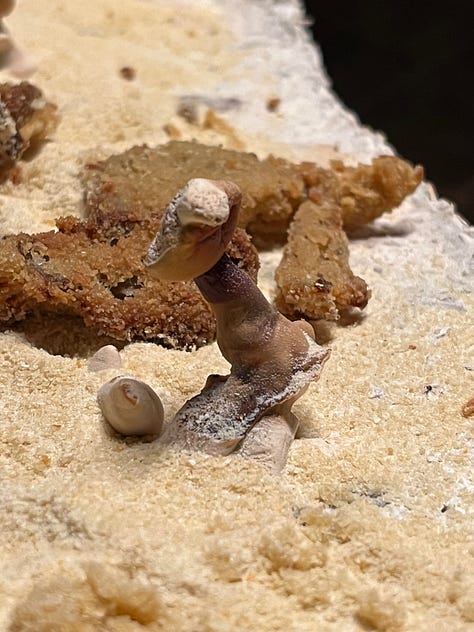
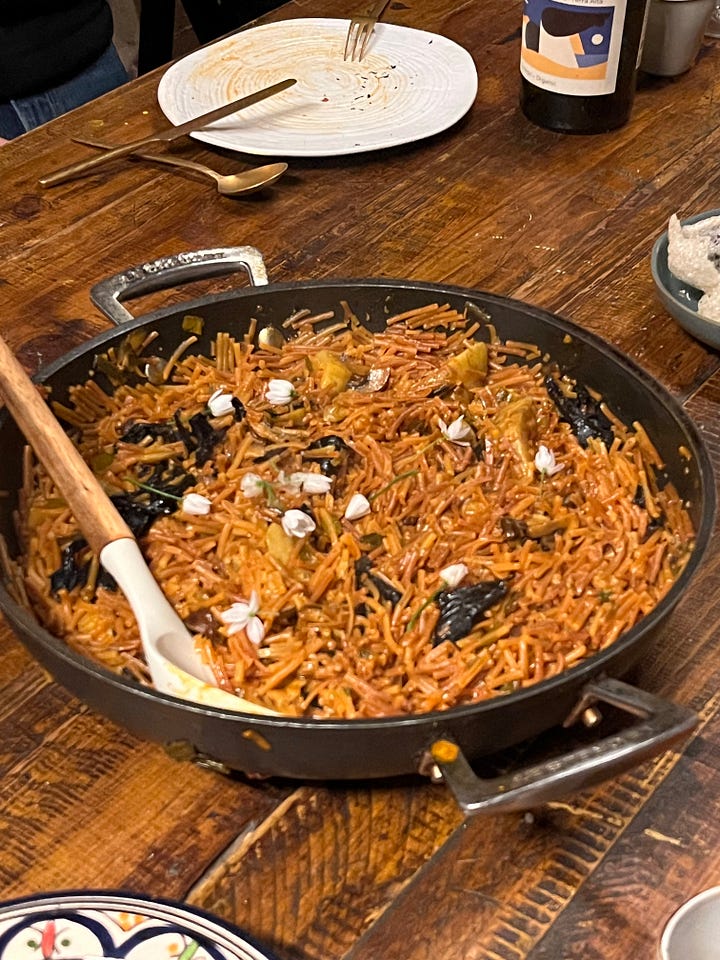
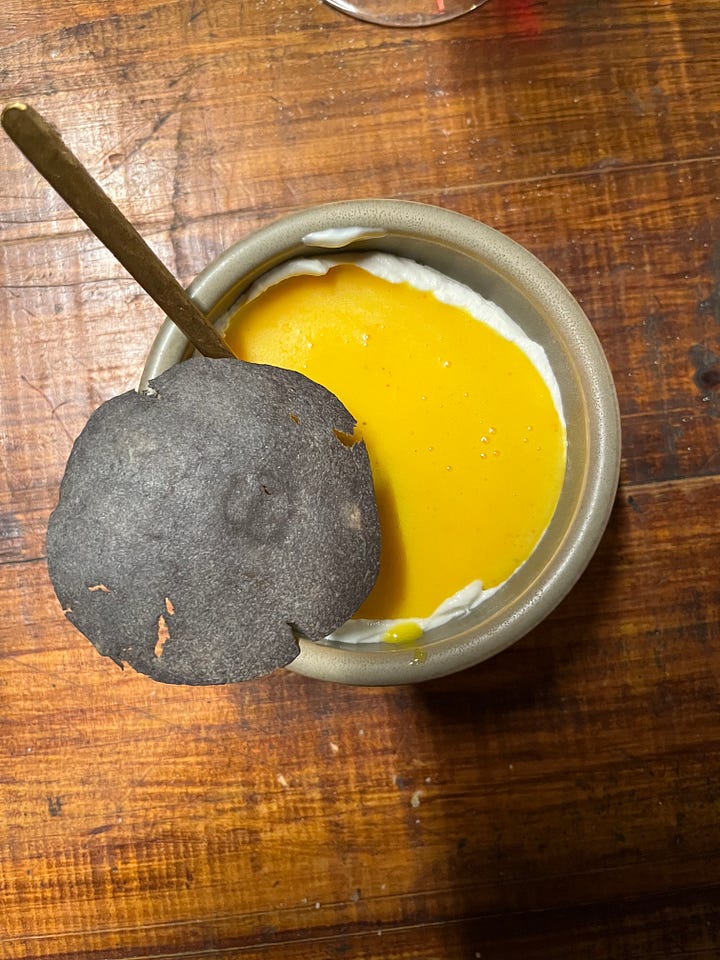
The food kept coming. Croquettes filled with porcini cream. Vegetarian (perhaps vegan) foie gras made with cocoa butter. Vegan “chicken nuggets” made from oyster mushrooms and served, like the croquettes, on a platter made from mycelium, a.k.a. fungus.
We couldn’t eat more, but somehow found room for “paella” made with burnt noodles and garnished with garlic flowers. By the time dessert came, I had lost all sense of time and space, so I can only share that the custard was made to resemble an egg, with the runny “yolk” and meringue-like white hiding a surprise fig (I think) jam on the bottom. Chef designed the desert to mimic the logo of the company who commissioned him for a special dinner.
Because that’s what Chef Morón does. In his words, he translates the value of a brand into edible things.
For us New Food Thinkers, that mean demonstrating the power of curating a story, not only with the food on the table, but also with the music and ambiance and words that accompany it. A magical and unique message, and evening, specially made for our unique class.
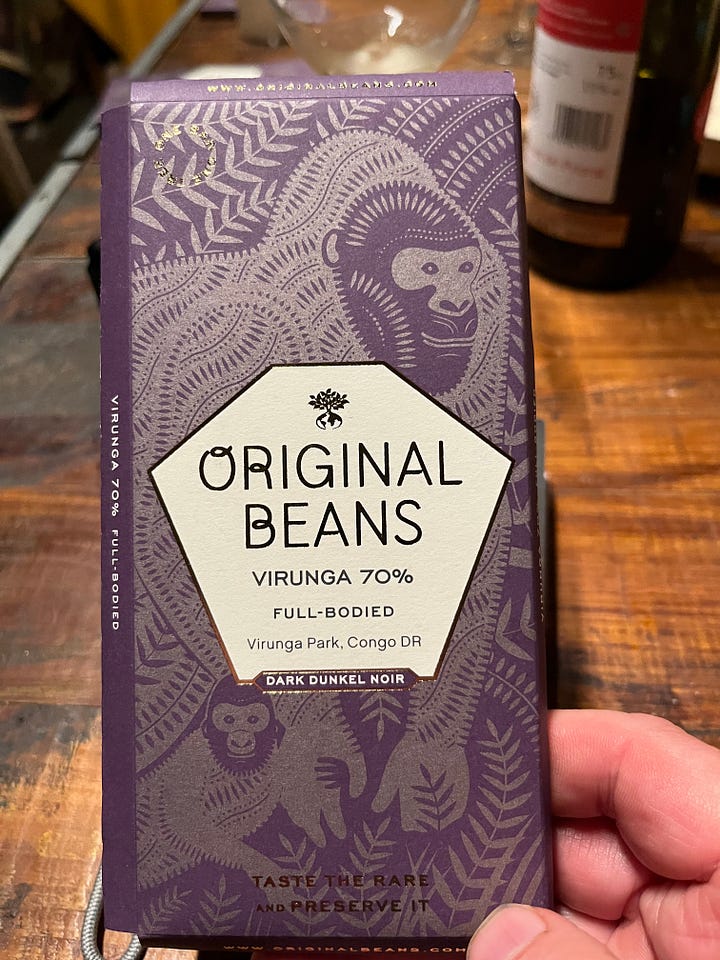
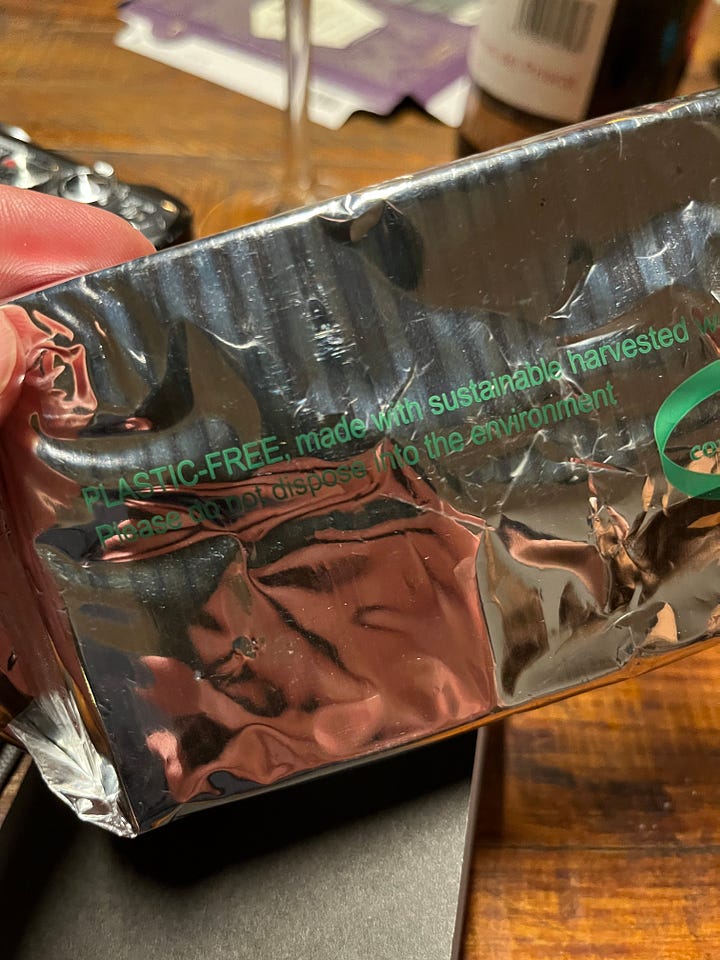
Oh, the ashes! The finishing touch in the evening was a special chocolate from Congo, supporting gorilla habitats. The foil wrapping is not foil, but made from wood, and completely compostable. And burnable. Quite thoroughly magical.
###








Holy moly!!
Thank you for an escape to Spain with you. This sounds crazy magical! Soak it up - Eat it up - Savor every minute! Thanks for taking us along. 🐌